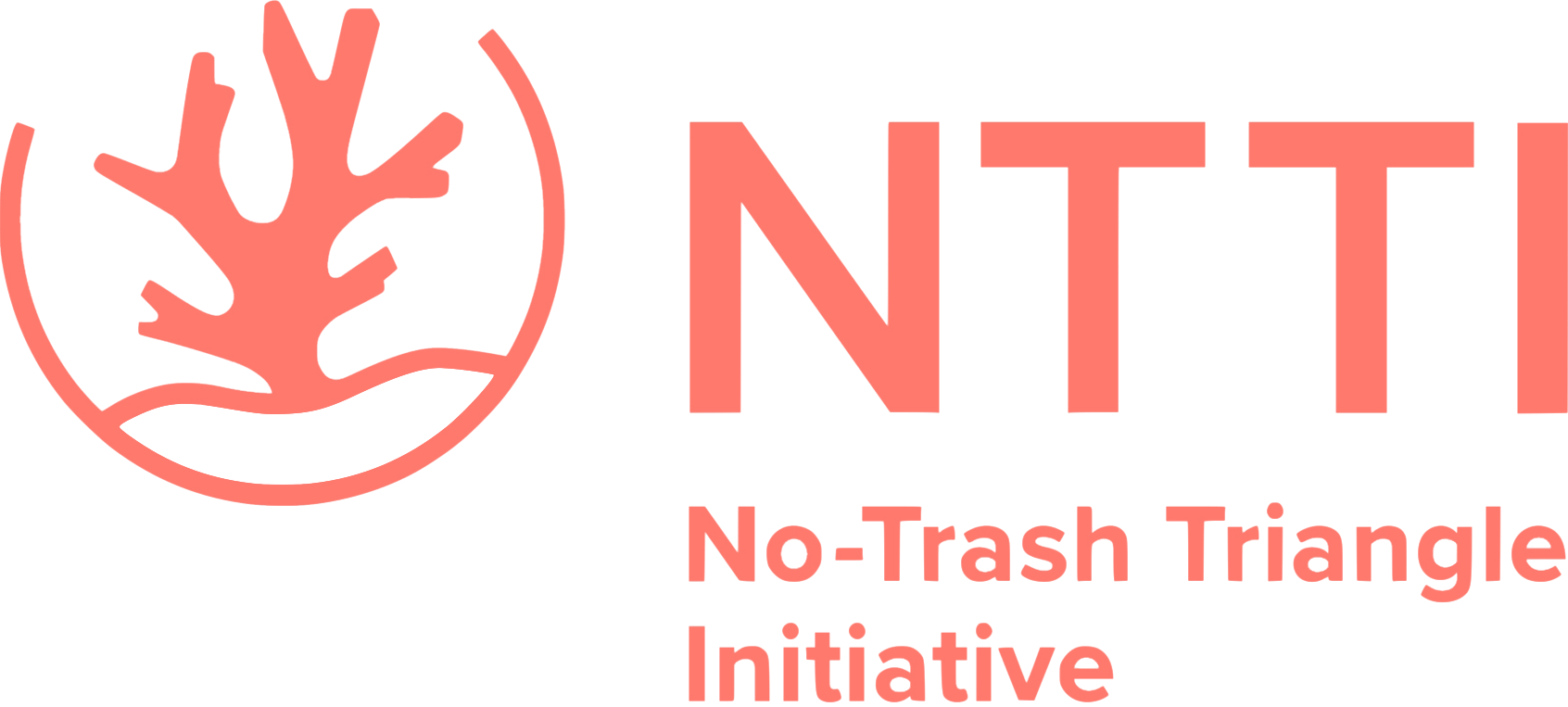How We Work: A Year In Plastic
The No- Trash Triangle Initiative is an ambitious project; we’re working towards the entire Coral Triangle being free from plastic pollution. To us, there’s no better place to start than our own patch of the Triangle; Bangka Island in North Sulawesi. It lies right at the heart of the 6 million km2 region (WWF, 2020).
In order to do this, we’re helping tackle the causes of the pollution crisis, whilst collecting and managing local waste. It’s not enough to just turn up to the beach with sacks though. If we want our success to be sustained over time, it requires a good system.
We’ve been developing this system since 2017, and we’re always looking to be more efficient and share tips with other organisations. The plastic tides aren’t slowing down so neither can we.
Here’s how we work:
Trash Collection
It takes time and dedication to maintain natural beaches. Our teams operate from resorts across the island, putting the effort in every morning to collect trash. We work through a collaboration of teams, each motivated by the satisfaction of having a tidy beach, and a healthy ecosystem.
The Sorting Station
The collected waste is then carried over to a nearby Sorting Station. Here, all the mixed, dirty trash from the beaches is cleaned and organised by material in preparation for recycling. It can be time-consuming, especially when there’s lots of drinking cups and wrappers to separate and clean, but it’s all worth it.
Then, about once a month, we load a boat with all the sorted trash. It’s taken off Bangka to the mainland, where it is loaded onto trucks for the Manado Recycling Centre. Our methods are designed to make their job as easy as possible, with a minimum amount going to landfill.
Raising Awareness
We like to encourage people to get involved by giving presentations to the resorts’ guests. Very often they take time from their holiday to join in.
We are firm believers in the power of education, and we spend a lot of time with Lihunu Junior High School, assisting with Environmental Science lessons. It’s part of our long-term plan to reduce mismanaged waste on the island. The lessons include trips to polluted beaches, where we teach the children about what we do and why we do it. They have fun out of the classroom, and we get extra helping hands – it’s a win-win.
Bangka Island
Our system was first used at Coral Eye. We focused on keeping our methods simple and replicable, so this resort could be used as a model for the rest of the island. Now, three more resorts, Murex, Blue Bay and Nomad Divers, are collaborating with Coral Eye under the No- Trash Triangle Initiative. This means that a large proportion of the Island’s coast is being managed under our system.
2019 In Numbers
Each of these four resorts keeps detailed records of everything they process, so we can monitor the trends in the pollution we’re dealing with. Let’s break down the results of 2019:
940 sacks of waste were removed from Bangka, weighing in at over 7.7 metric tonnes.
59% (of the total by weight) was recyclable material, including:
22% (of the total by weight) single-use plastic, including clear and coloured PET bottles, bottle caps and cups.
37% (of the total by weight) multi-use products, including hard plastics (like toys and chairs), aluminium and glass.
41% (of the total by weight) was unrecyclable waste, including Styrofoam and textiles, which had to go to landfill.
The findings of initiatives like ours are key to building an understanding of the marine pollution crisis. On a global level, we are still vague on what we’re dumping into our oceans each year. We know that in 2018, 359 million tons of plastic were produced (Garside, 2019). Earth Day estimates that half of this is single-use (Earth Day, 2018). But to piece together the bigger picture of what’s entering the waters, we need local studies like ours to share their results.
Beyond Bangka
Now we’ve proven that our model can be successfully recreated, we’re looking further afield. Countless communities across the Coral Triangle are facing a daily delivery of marine trash and have limited resources to manage it. Admittedly, our success on Bangka is in large part down to the collaboration of resorts, our relationship with the school, and our links with the recycling centre. This takes time to establish, but it works. With some tailoring to each community, our system can be replicated successfully across the region, making for a cleaner, healthier Coral Triangle.
By Braden Reilly
Bibliography
Earth Day 2018. FACT SHEET: SINGLE USE PLASTICS. earthday.org. [Online]. [Accessed 20 September 2012]. Available from: https://www.earthday.org/fact-sheet-single-use-plastics/.
Garside, M. 2019. Global plastic production statistics. Statista. [Online]. [Accessed 18 April 2020]. Available from: https://www.statista.com/statistics/282732/global-production-of-plastics-since-1950/.
WWF 2020. About The Coral Triangle. WWF. [Online]. [Accessed 30 April 2020]. Available from: https://wwf.panda.org/knowledge_hub/where_we_work/coraltriangle/coraltrianglefacts/.



